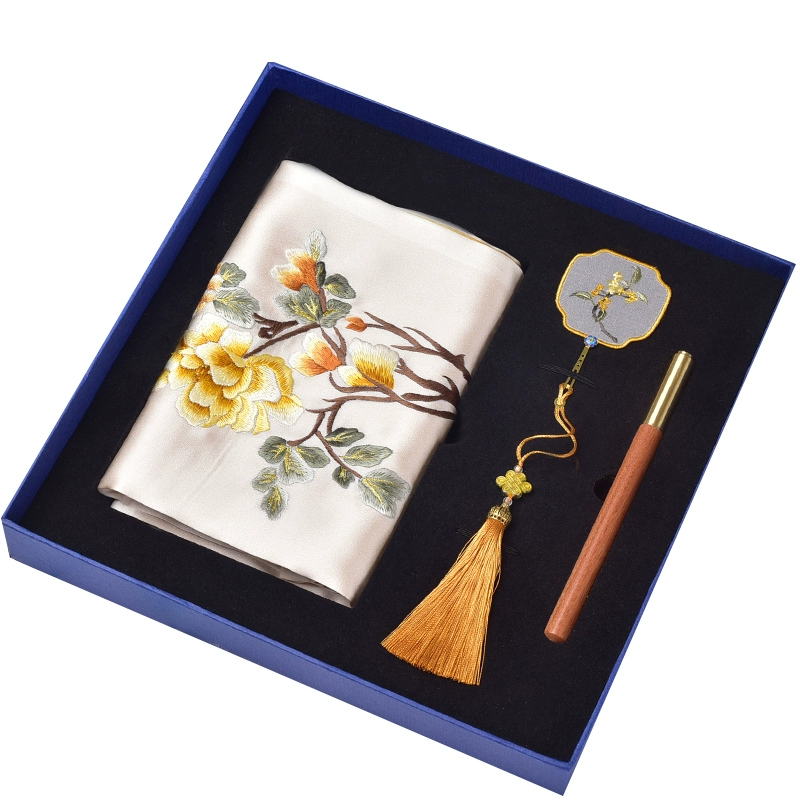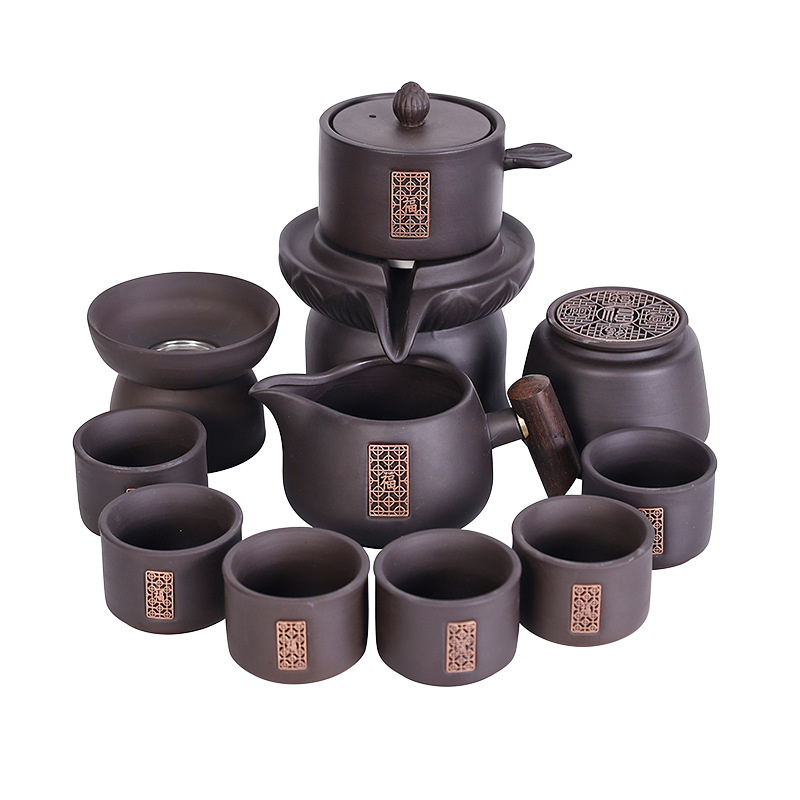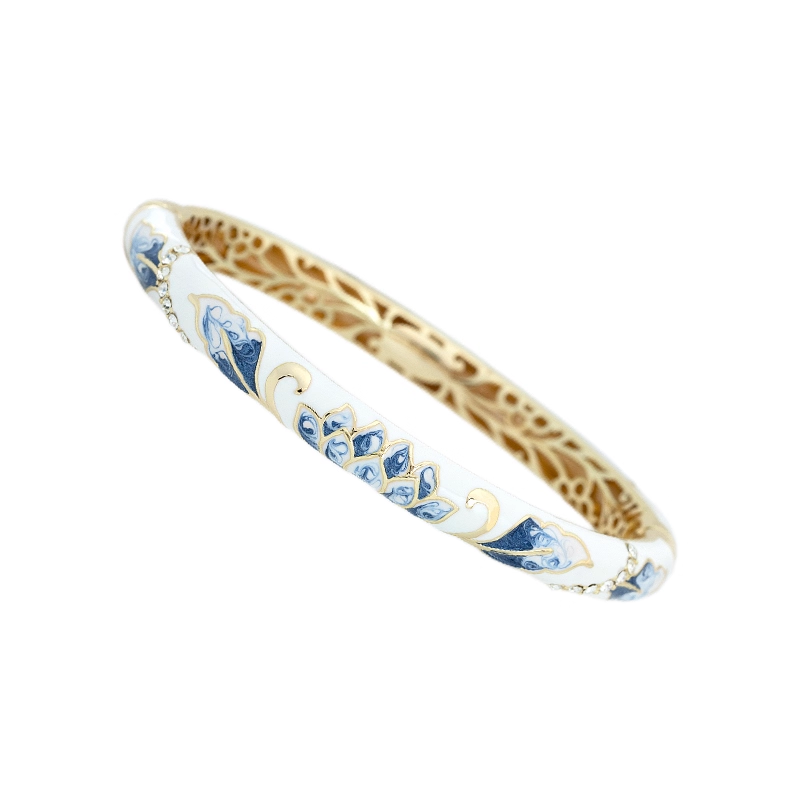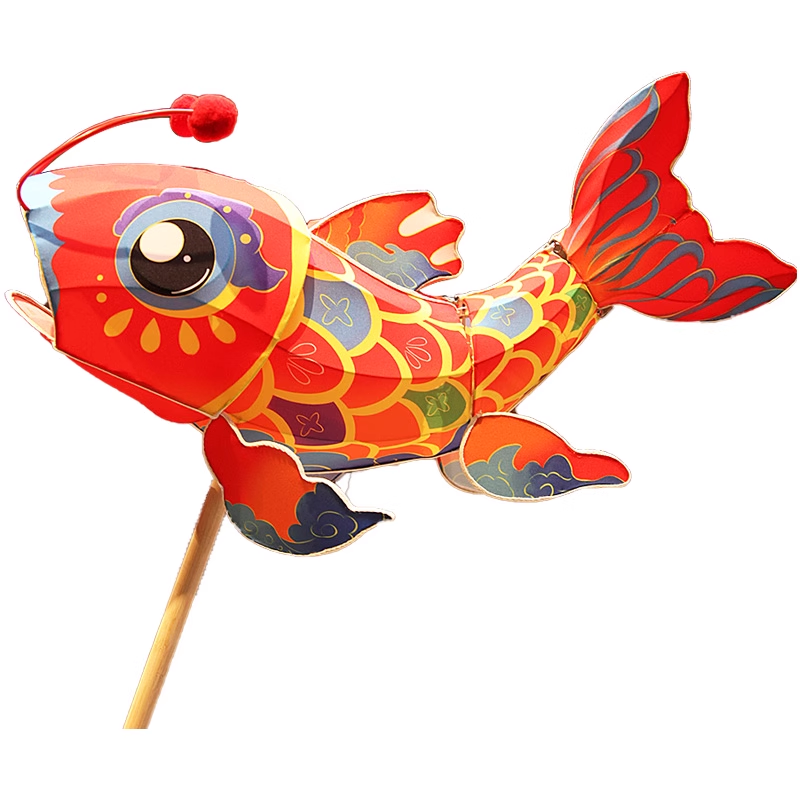Study Utensils: Elegance Beyond Brush and Ink, The Spiritual Haven on a Scholar’s Desk
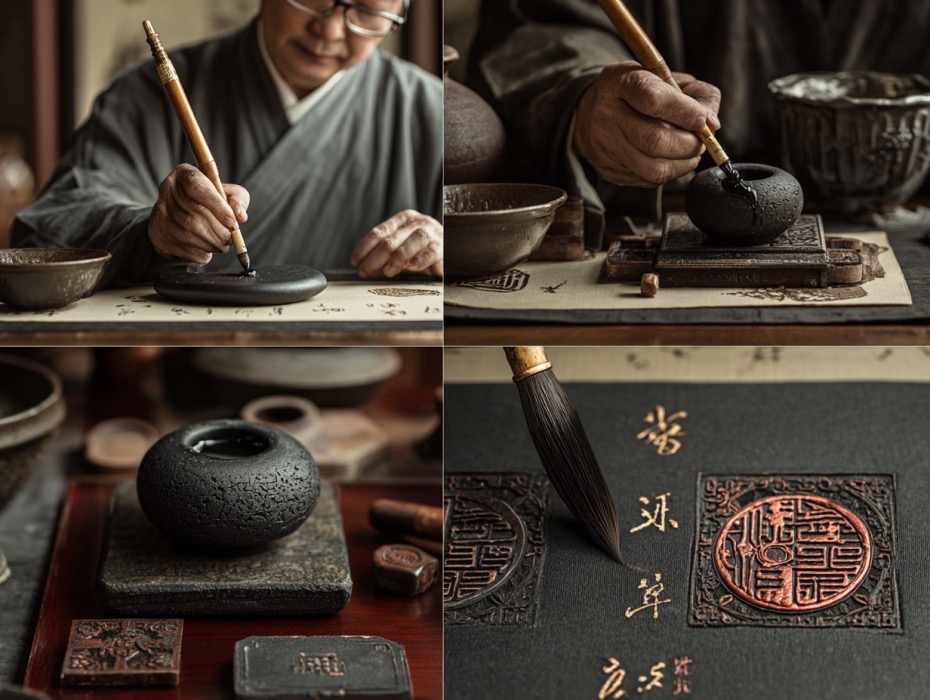
In the elegant world of traditional Chinese culture, besides the “Four Treasures of the Study” (brush, ink stick, paper, ink stone), auxiliary utensils such as brush rests, paper weights, and ink pads, with their “small yet exquisite” traits, outline the poetic daily life on a scholar’s desk. These utensils not only serve practical functions but also embody the delicate craftsmanship of Oriental aesthetics. From picking up the brush to applying ink, and finally to stamping the seal, each piece extends the scholar’s spiritual world. Today, with their simple and elegant demeanor, they still convey the unique charm of China’s “study culture” to the world.
The writing brush, as the core tool for writing, traces its history back to the “carving tools” of the Neolithic Age. After Cai Lun improved papermaking technology in the Han Dynasty, the craftsmanship of writing brushes matured. High-quality writing brushes are judged by the “Four Virtues”: sharp, neat, round, and resilient. The brush head is mostly made of goat hair (soft brush), weasel tail hair (firm brush), or rabbit hair (fine brush). Soft goat-hair brushes are suitable for writing regular script and running script; firm weasel-hair brushes are ideal for cursive script and seal script. The brush handle is made of bamboo, wood, ivory, or red sandalwood, ensuring a comfortable grip while being ornamental. The “Xuan brushes” of the Tang Dynasty and “Huzhou brushes” (from Huzhou, Zhejiang Province) of the Song Dynasty are renowned masterpieces. Huzhou brushes, famous for “strict material selection and exquisite craftsmanship”, are still favored by calligraphers and painters today.

The ink stone is not only a tool for grinding ink but also known as the “longevity stone” among the “Four Treasures of the Study”. Its history is intertwined with that of the writing brush. Regularly shaped stone ink stones appeared in the Han Dynasty. In the Tang Dynasty, “Duan ink stones” (from Zhaoqing, Guangdong Province) and “She ink stones” (from Shexian County, Anhui Province) became the finest ink stones due to their fine texture and quick ink-grinding ability. Duan ink stones have a warm texture that “turns breath into ink”, and the natural “stone eyes” and “ice veins” in the ink pool make each ink stone a unique work of art. She ink stones are famous for their “rich textures”; natural patterns such as “golden star veins” and “silk veins” add a touch of elegance to ink grinding. During the Ming and Qing dynasties, carving art was integrated into ink stone craftsmanship, with landscapes, flowers, birds, and figures engraved on the stones, turning ink grinding into an aesthetic experience.
The brush rest, also called “brush stand”, is a “perch for brushes” where scholars place their brushes temporarily. Its history dates back to the Three Kingdoms period. Early brush rests were mostly made of wood with simple designs. After the Song Dynasty, materials expanded to porcelain, copper, jade, and bamboo, and designs became more exquisite: Porcelain brush rests often imitate mountain shapes, with the “Five Great Mountains” and “Nine Peaks” being the most classic, and their glazes (either cyan or white) exude simplicity and elegance; Copper brush rests are often cast in the shape of pine branches or bamboo joints, with smooth lines and resilience; Jade brush rests are made of Hetian jade or jadeite, with a warm and translucent texture, becoming treasures on the desk. Though small, brush rests cleverly solve the problem that “hanging brushes are easy to damage and laying them flat makes them dirty”, adding a sense of ritual to every pause in writing.
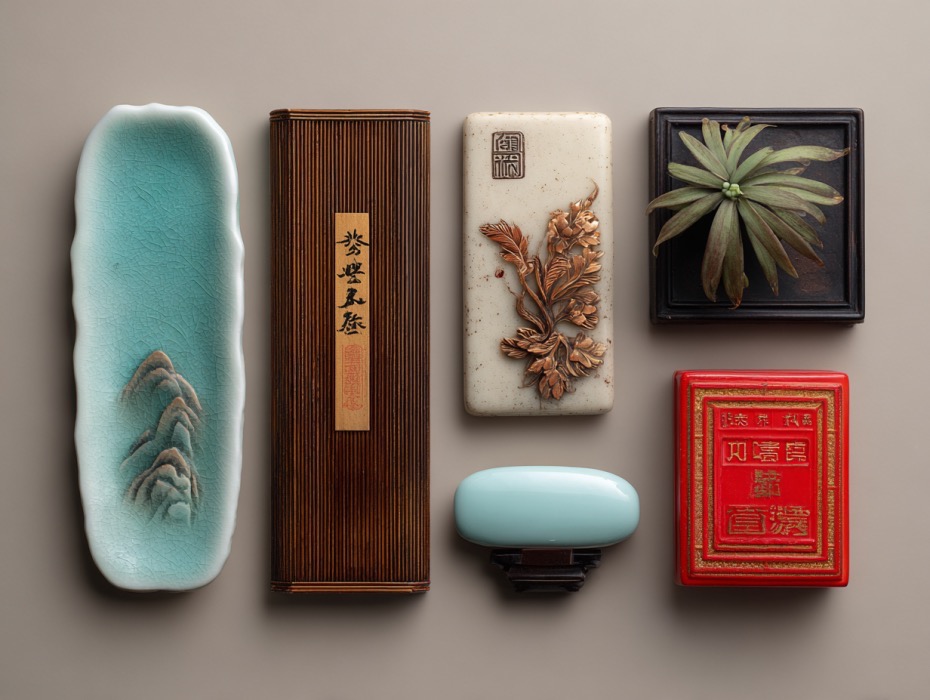
The paper weight is designed to “press paper and fix pages” to prevent paper from sliding while writing. Its history can be traced back to the “pressing stones” of the Han Dynasty. Early paper weights were mostly made of stone. During the Ming and Qing dynasties, materials and designs flourished: Copper paper weights are often cast into rectangles, engraved with poems and maxims, serving both practical and educational purposes; Jade paper weights are warm and heavy, mostly plain or with lightly carved landscapes, showing understated luxury; Bamboo paper weights undergo carbonization treatment to resist moths and decay, and their surfaces are often carved with bamboo patterns or orchids, echoing scholars’ spiritual pursuit of “plum blossoms, orchids, bamboo, and chrysanthemums”. A high-quality paper weight not only stabilizes the paper but also calms the writer’s mind with its weight and texture, helping them focus on the brush and ink.
The ink pad is the “finishing touch” for stamping seals. Its history dates back to the “sealing clay” of the Warring States period. After the Tang Dynasty, with the maturity of seal art, ink pad craftsmanship improved. High-quality ink pads are made by mixing “cinnabar” (the main pigment, bright red and non-fading) with auxiliary materials such as castor oil and mugwort wool, followed by repeated pounding and kneading: Cinnabar ensures pure color, castor oil keeps the ink pad moist for a long time, and mugwort wool enhances adhesion to ensure clear and complete stamping. The “Zhangzhou Eight-Treasure Ink Pad” of the Qing Dynasty is famous for its “bright color and permanent non-fading”; precious materials such as pearls and agate are added, making the ink pad not only practical but also a collectible treasure. A good seal paired with a high-quality ink pad makes the final stamp on calligraphy and painting works more solemn.
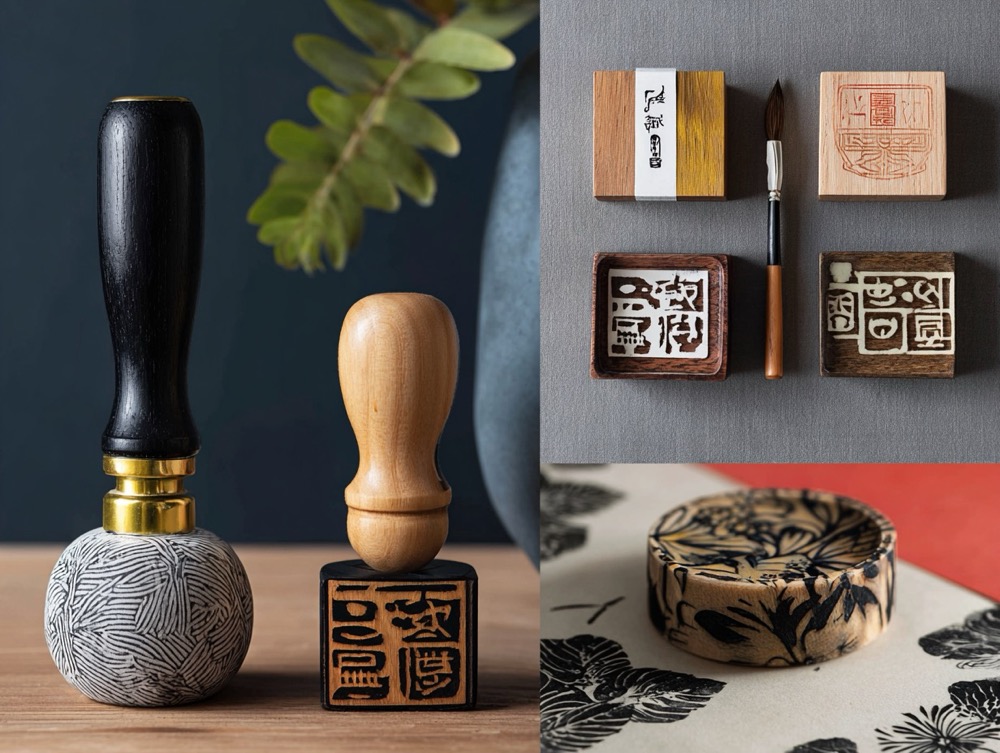
These study utensils, though with different functions, jointly build an elegant world on the scholar’s desk. In modern life, they have not faded with the changes of the times: On one hand, traditional craftsmanship is systematically protected; techniques such as Huzhou brush making and Duan ink stone carving have been successively included in the National Intangible Cultural Heritage List, and veteran craftsmen pass down their skills to the younger generation through the “master-apprentice” model. On the other hand, design innovations have brought new vitality to traditional utensils: Simple-style bamboo paper weights and portable mini brush rests have brought study utensils to modern desks; cultural and creative products such as ink pad sets and carved brush rests have become windows for young people to understand traditional culture.
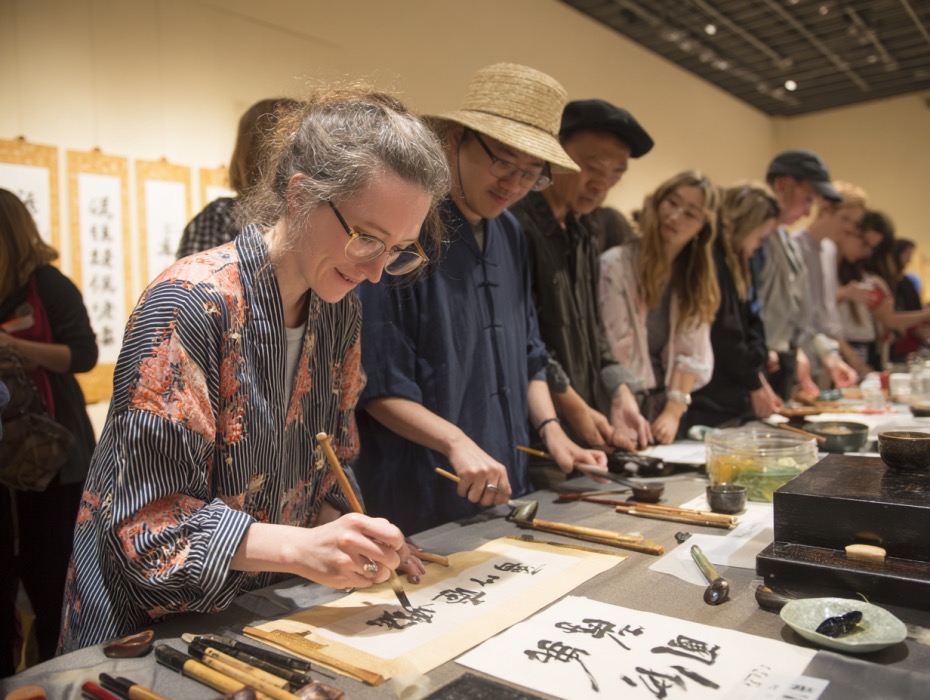
From the stone ink stones and wooden brushes of the Han Dynasty, to the jade paper weights and copper brush rests of the Ming and Qing dynasties, and to the modern cultural and creative study utensils of today, these utensils have always interpreted the Chinese people’s pursuit of an elegant life with the trait of “coexistence of practicality and aesthetics”. They are not only tools on the desk but also vivid historical memories and an enduring cultural heritage. In the new era, with the Oriental elegance accumulated over thousands of years, study utensils transcend time, space, and national borders, telling the poetic legend of Chinese scholars’ lives to the world.
